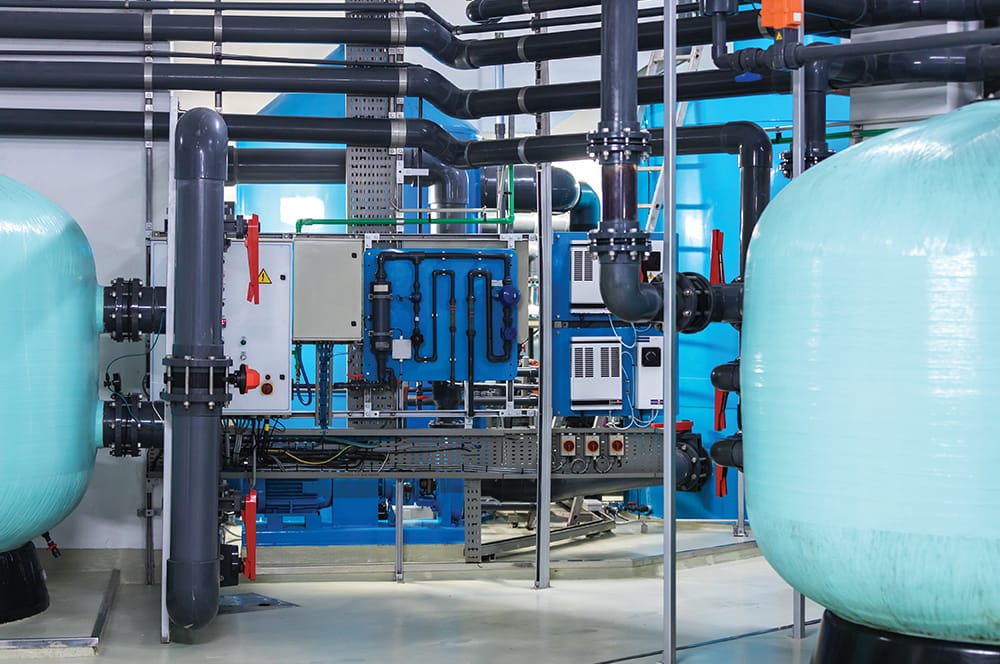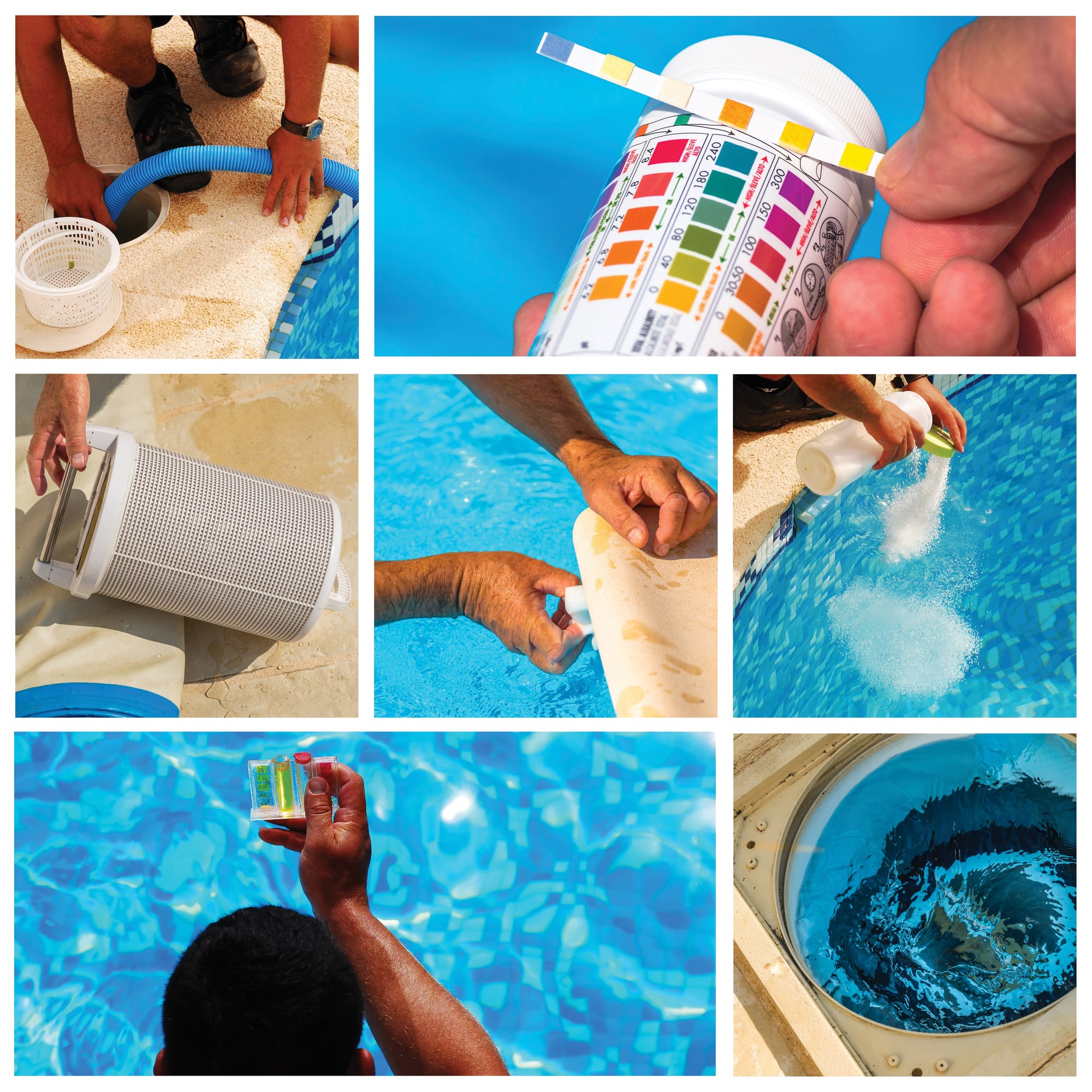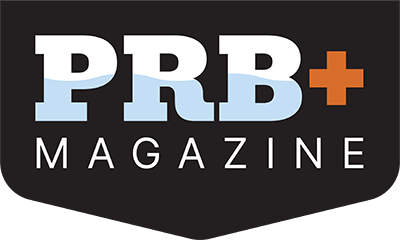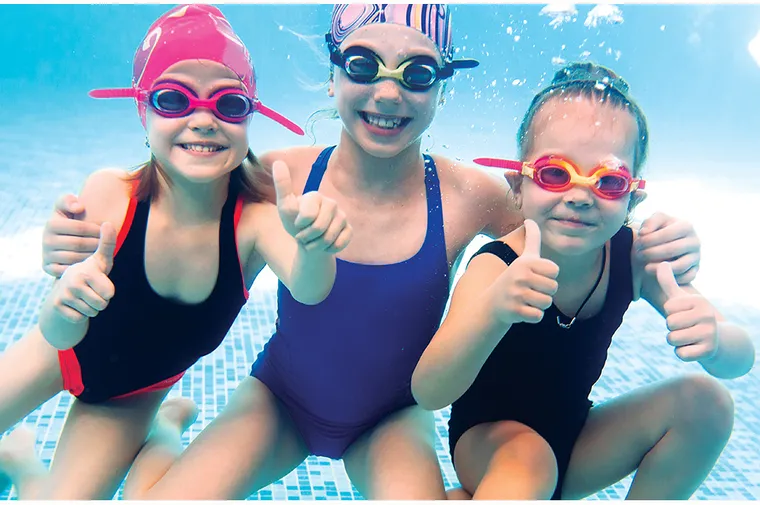CDC, NSF, and Westlake Water Solutions offer annual facility-maintenance tips
By Frank Schiffman
The COVID-19 pandemic, followed by inflationary cost increases, has made it more difficult for aquatic facility managers to maintain smooth operations. Staff shortages and budget tightening have also made general maintenance, water safety, and chemical management feel like herding cats.
One way to help mitigate many of these challenges is to step back, carefully evaluate operating procedures, and seek (or dust off) facility maintenance practices, with focus on a few key factors.
Behind Every Successful Manager Is A Healthy Pump Room
When thinking of risk avoidance at an aquatic facility, pump room safety should be a top priority.
For starters, mixing incompatible chemicals can have dangerous consequences, and there have been many cautionary tales in which mixing chlorine and acid has produced hazardous gases that resulted in pool evacuations and swimmer hospitalizations. The best defense is to keep chemical storage areas organized. Incompatible chemicals should be separated, along with well-marked delivery systems, so the right product goes in the right storage tank/feeder. It is a good idea to routinely inspect chemical feed systems to prevent clogging and also to keep controller systems calibrated. Dave Button, vice president of development at Chemtrol, says, “A chemical controller needs to be calibrated if the hand test does not match the reading on the controller. When the operator does their regular hand test, via DPD, spin test, etc., they should always compare it to their controller readings. If the readings are the same, there is no need to recalibrate. If the readings are different, it’s time to recalibrate.”
The best way to ensure proper pump room operations is to check that the equipment is certified. That’s where NSF helps. NSF tests pool and spa equipment and chemicals to ensure they are certified to NSF/ANSI/CAN Standard 50.
“Most state codes require NSF/ANSI/CAN Standard 50 certification to help ensure the products work the way they claim to,” says David Nance, Senior Manager of Electrical Safety and Recreational Water at NSF. “This helps facility designers, engineers, and operators know that they’re getting a product that has been rigorously third-party tested to NSF/ANSI/CAN 50 requirements.”
If unsure about a product’s certification status, NSF has an effective online certification directory at https://www.nsf.org/certified-products-systems.
Another important area of concern is making sure the water is properly chlorinated and balanced. Properly chlorinated and balanced water helps prevent recreational water illness (RWI) outbreaks that endanger swimmers and cause facilities to temporarily close.
There Is No Substitute For A Well-trained Staff
Most aquatic facilities require pool-operator certifications for staff members, which supplement the knowledge they may not learn on the job. These certifications also help with pump room safety, especially when new or part-time workers join the staff.
According to a recent aquatic-facility management industry survey, 56.7%* of respondents reported they require aquatic management and/or pool operator certifications.

Effective resources include the Certified Pool Operator (CPO) course from the Pool Hot Tub Association (PHTA), as well as the Aquatic Facility Operator (AFO) course from the National Recreation and Park Association (NRPA).
Chief among aquatic operating codes is the Centers for Disease Control and Prevention’s Model Aquatic Health Code (MAHC). The MAHC aims to prevent injuries associated with public aquatic venues through design, construction, operation, and management.
“Studies have shown that pools with operators who have successfully completed formal training in pool operation have better water quality than pools without a trained operator,” says Jasen Kunz, MPH/REHS/RS, healthy water lead at the CDC’s Waterborne Disease Prevention Branch. “And [the] CDC's Model Aquatic Health Code identifies those essential topics for operator training courses. I would encourage operators to complete an operator training course as recognized by their authority having jurisdiction.”
Another sound resource—that takes only 14 minutes—is a video titled “Pool Chemical Safety” from the Chlorine Institute and the American Chemistry Council. It’s a helpful resource not only for new employees but applicable for a safety moment in team meetings, as well as a primer for temporary summer staff. The video covers everything from pool-chemical equipment and safety data sheets to personal protective equipment and more. The video is publicly available on YouTube.
Operation Renovation
A 2024 survey among aquatic-facility respondents revealed that more than 80%* were planning construction at their facility over the next several years, with roughly 55% planning renovations.
Before undergoing these additions to a facility, it’s important to keep some small nuances in mind to bring the bigger picture into focus.
There are many layers to a renovation and new-build process, with numerous suppliers, vendors, and subcontractors typically involved. And, with large-scale construction projects, facility operators need to be vigilant about what equipment and chemicals are specified. Often, pump room equipment falls to the bottom of the specifications list. Yet, this equipment is a make-or-break factor when it comes to delivering clean, healthy water.
Ask questions about equipment and chemical systems early in the construction process, and look beyond the drawings when it comes to chemicals and controllers by also considering the environments in which they’ll be placed.

Not Your Grandfather’s Pool Amenities
Many renovations tend to include new amenities, like splash pads, lazy rivers, and slides that have grown in popularity. Traditional rectangular pools don’t get the traffic they once did. These shallow-water amenities create important considerations for sanitizing water.
Traditionally, to size a piece of general aquatic equipment or chlorine-feed equipment to meet anticipated demand, regulations specify three pounds of chlorine per hour per 10,000 gallons of water. Shallow-water pools take much more chlorine per their overall volume, and chlorine degrades faster in shallow water from the sun’s rays and UV radiation.
“Maintaining chlorine chemistry and water balance in shallow water amenities is critically important,” says Kunz. “These venues often experience large numbers of people. And some are considered increased-risk venues like splash pads. The MAHC recommends that supplemental disinfection be installed on these increased risk venues.”
This all points to the need for high-capacity, chemical feeder equipment that feeds effectively during peak hours.
New builds and renovations are looking to automation to make jobs easier and more reliable, and certified chemical controllers are a great way to accomplish that.
Targeting Budget Dollars For The Greatest Returns
Operating a commercial aquatic facility is more expensive today than it was just a few years ago. If you’re going to spend money, spend it on equipment that reduces operating costs in the future. As labor becomes more difficult to come by, anything leaders can do to automate the pump room will pay dividends going forward.
It’s important to assess the total cost of ownership, especially where capital investments, like equipment, are concerned. One example might involve closely reading the total-cost difference between pool chlorine and pH adjustment. Chlorination solutions, like calcium hypochlorite (cal-hypo) tablets may appear more expensive upfront. However, a total cost of ownership-evaluation might show that, over time, it is not only more cost-effective but also a safer alternative to liquid bleach.
Ultimately, safety comes first at recreation facilities, and elements including risk avoidance, staffing and training, and strategic renovations are part of the bigger safety picture.
It is for these reasons and more that aquatic-facility managers at parks and recreation facilities can benefit from consulting with experts like Westlake Water Solutions—a world leader in water treatment solutions—to help optimize operations and mitigate problems.
*Indicates results from the 2024 annual State of the Industry Report conducted by Recreation Management magazine.
Frank Schiffman is Business Manager/Director at Westlake Water Solutions and has worked in the commodity chemicals and water treatment products industries for 40 years. In that time, he has been responsible for a broad portfolio of chemical treatment brands serving diverse markets ranging from agriculture and drinking water to food processing and backyard swimming pools.

